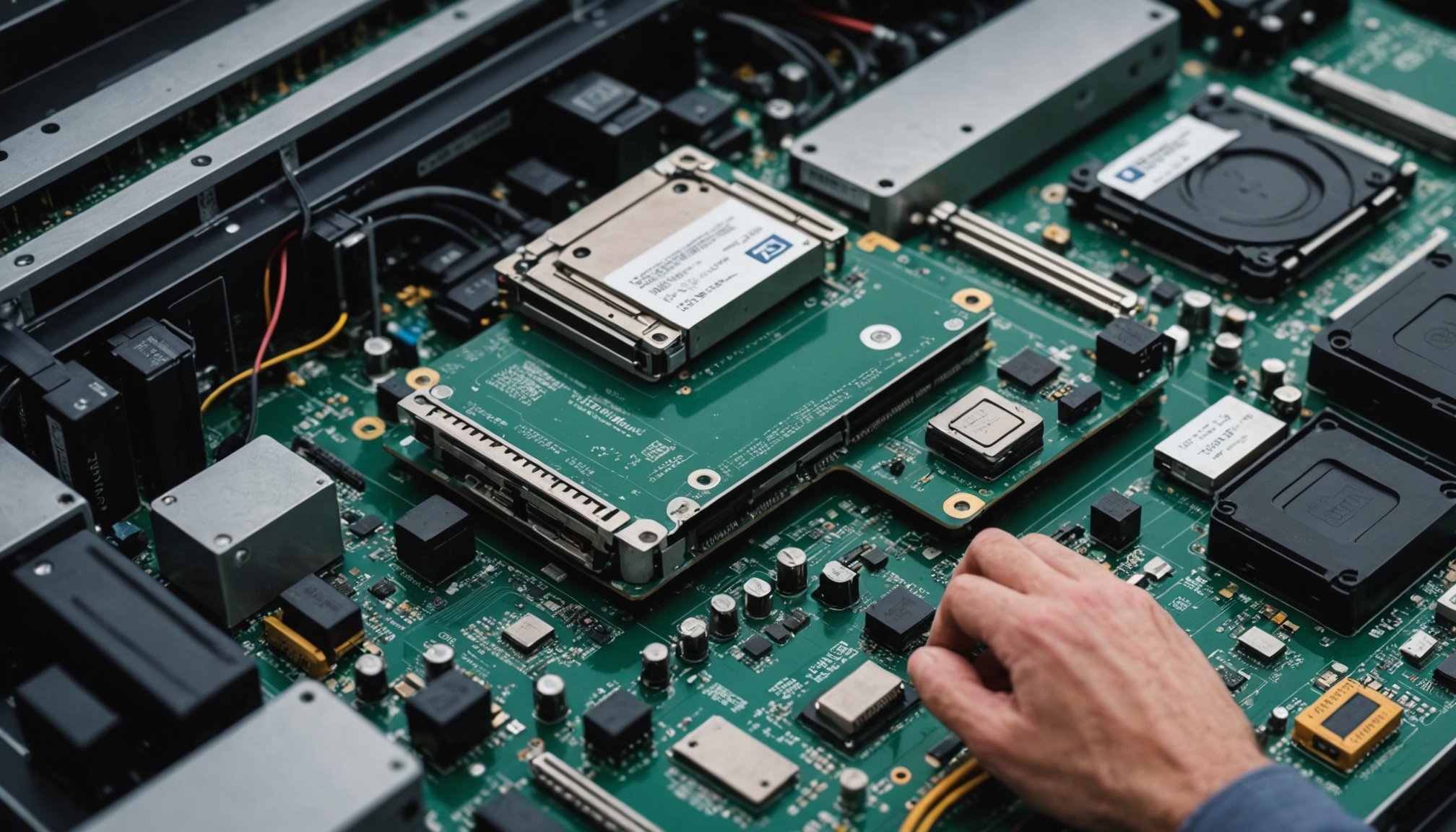Core hardware-based security practices in UK computing
Ensuring robust UK hardware security begins with the integration of encryption chips within computing devices. These chips provide a dedicated environment for handling cryptographic functions, making data protection methods more resilient against attacks. Alongside this, the secure boot process plays a critical role by verifying the integrity of system software during startup, preventing unauthorized or malicious code from loading.
Trusted Platform Modules (TPMs) are fundamental components widely adopted in UK computing to safeguard sensitive information. TPMs generate, store, and manage cryptographic keys securely, enhancing device authentication and encryption capabilities. Their implementation supports secure data storage and helps enforce device integrity, which is essential for modern security standards.
Also to discover : How do advancements in UK computing hardware enhance cybersecurity measures?
Biometric authentication is increasingly prevalent in UK hardware security, offering a user-friendly yet powerful data protection method. Fingerprint scanners and facial recognition systems provide physical security features that complement cryptographic protections. These biometric techniques reduce reliance on passwords, which can be vulnerable to theft or guessing, thereby strengthening overall device security.
In summary, UK hardware security leverages a combination of encryption technologies, secure boot mechanisms, TPMs, and biometric authentication to build a layered defense. This comprehensive approach ensures sensitive data is protected at the hardware level before software-based safeguards even come into play.
Also to see : How Does the Choice of Computing Hardware Impact Your Business Efficiency?
Legal frameworks and compliance standards governing hardware security in the UK
Understanding UK data protection law is essential when handling hardware security. The General Data Protection Regulation (GDPR compliance) sets rigorous requirements for protecting personal data stored or processed on physical devices. Hardware must be secured to prevent unauthorized access, ensure data integrity, and enable prompt breach detection—these are non-negotiable standards under GDPR.
The National Cyber Security Centre (NCSC) security standards provide valuable guidance tailored for hardware and infrastructure security. The NCSC outlines best practices for configuring computing hardware that supports strong encryption, secure boot processes, and supply chain integrity. These standards help organizations align with national expectations concerning resilience against physical and software-based attacks.
UK legislation also influences procurement policies. Public and private sectors must consider security certifications and compliance when selecting hardware vendors. This ensures not only technical compliance but also ongoing protection as hardware components and firmware updates evolve. Organizations are encouraged to audit and validate hardware configurations regularly to maintain adherence to NCSC security standards and uphold UK data protection law requirements.
Adhering to these frameworks offers a robust foundation for secure computing environments that prioritize data privacy and system integrity.
Differentiating consumer and enterprise hardware security in the UK
When considering consumer hardware security UK, the focus typically lies on baseline protections. These include basic encryption, secure boot capabilities, and firmware integrity checks designed to keep personal data safe on laptops or smartphones. Such features are essential for everyday users but often lack the depth needed in high-risk environments.
In contrast, enterprise security solutions emphasize comprehensive protection tailored to business demands. This involves deploying hardware security modules (HSMs), which deliver robust cryptographic processing and key management within a tamper-resistant environment. Businesses benefit from integrated system protections ensuring not only device security but also safeguarding the broader IT infrastructure against sophisticated threats.
Additionally, secure business computing in the UK demands tailored security configurations reflecting specific industry requirements, such as finance or healthcare. These configurations might involve stricter access controls, compliance with regulatory standards like GDPR, and virtualized isolated environments to prevent data leaks.
Understanding these distinctions helps organizations choose the right balance between usability and protection, ensuring that both consumer-grade and enterprise-grade hardware security fit their unique operational contexts.
Example scenarios and best practices for secure hardware deployment
When organizations in the hardware deployment UK sector face data breaches, hardware-based security solutions often play a crucial role in defense. For instance, a financial firm recently thwarted unauthorized access by using hardware encryption modules that protected sensitive client information. This example underlines the importance of integrating physical security layers with software controls to safeguard data effectively.
Implementing security best practices begins with selecting trusted, tamper-resistant hardware. Organizations should enforce strict data protection examples such as Secure Boot and Trusted Platform Modules (TPM) to verify device integrity. Crucially, maintaining computing hardware security relies on regular firmware updates to patch vulnerabilities as they emerge, thereby reducing risk exposure.
Ongoing risk assessments form another pillar of security best practices. They help identify new threats and adjust security measures accordingly. For successful hardware deployment UK, companies must adopt a proactive stance—periodically reviewing deployment protocols, testing hardware resilience, and validating encryption effectiveness. This comprehensive approach ensures sustained protection of digital assets through hardware solutions crafted with security in mind.








